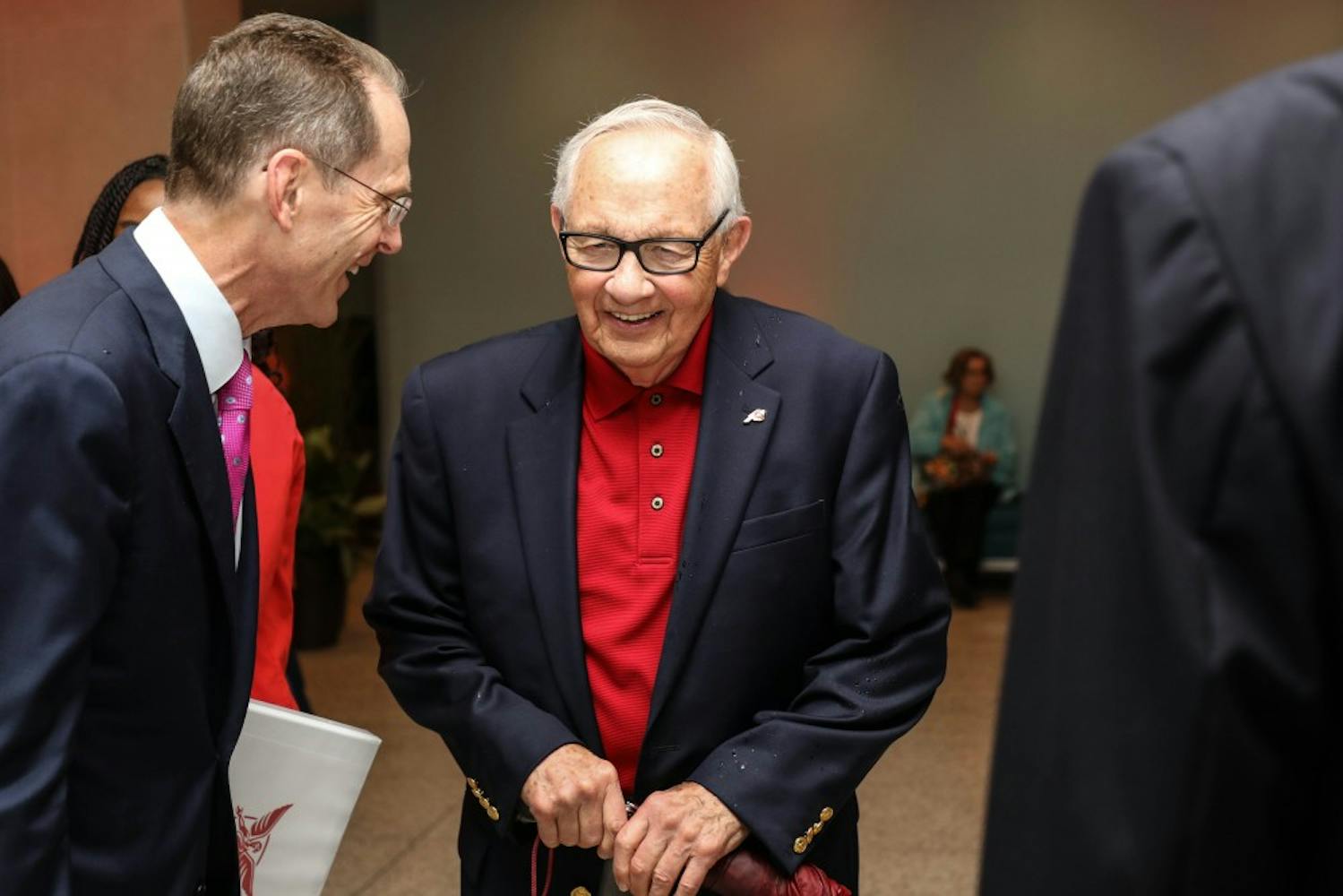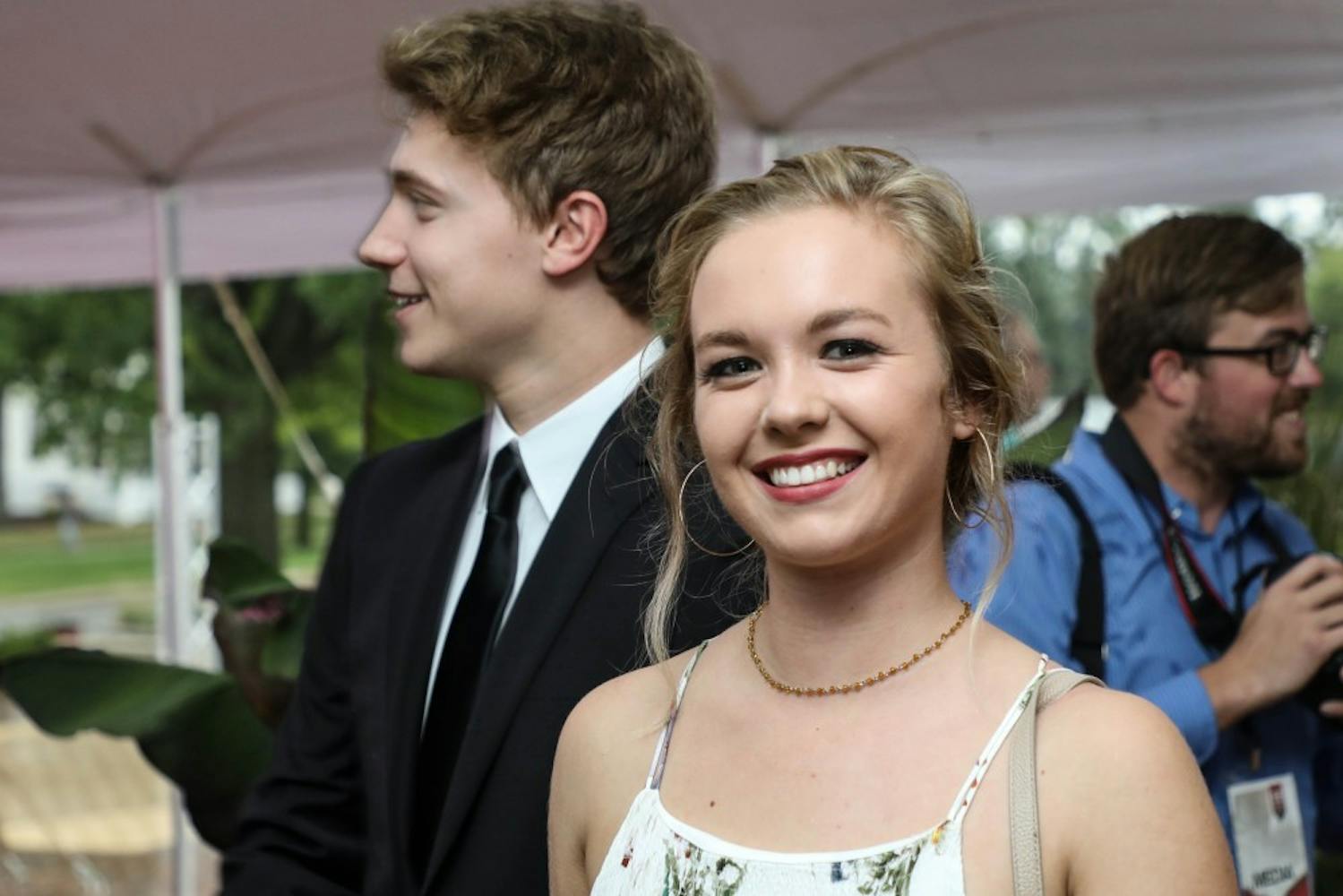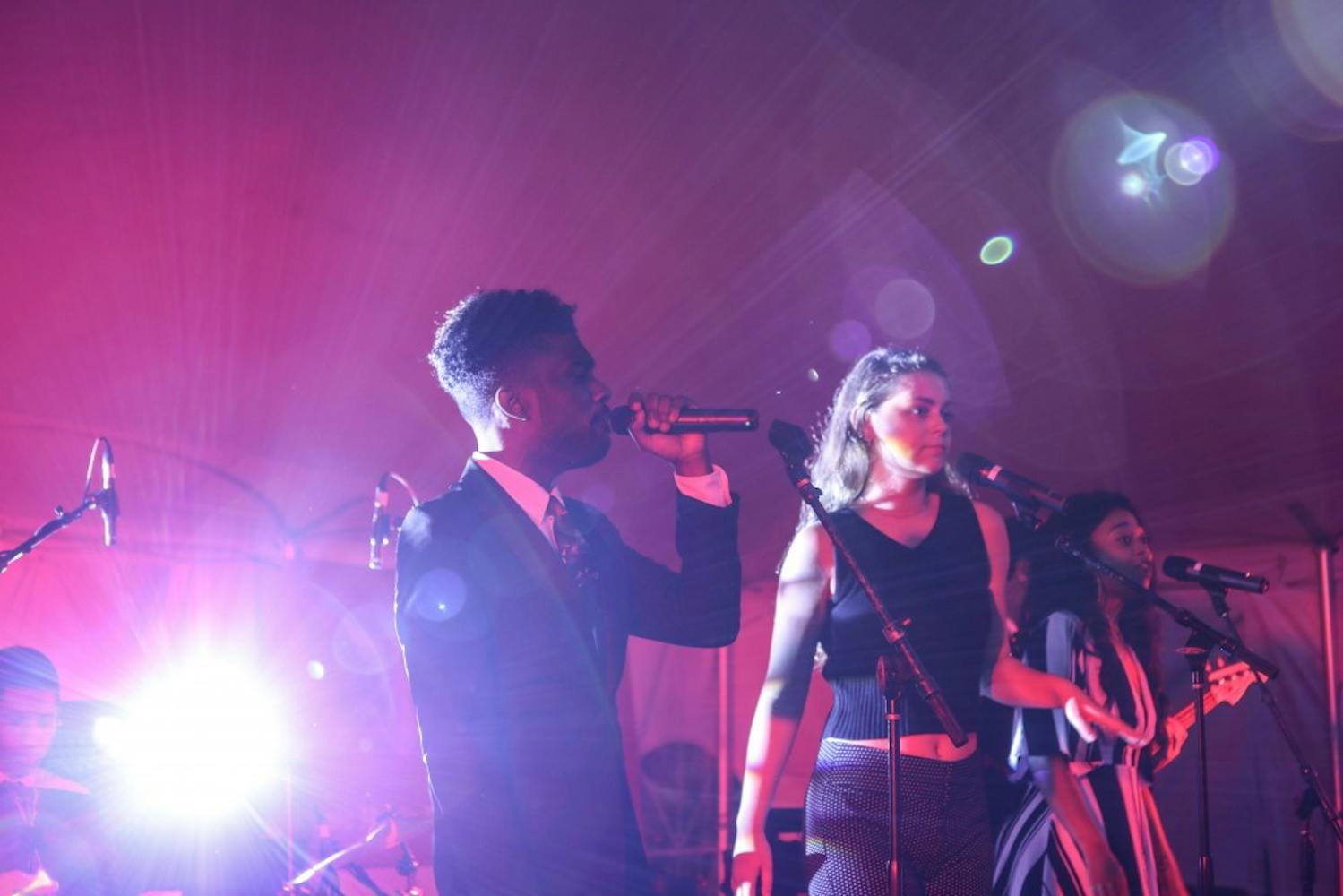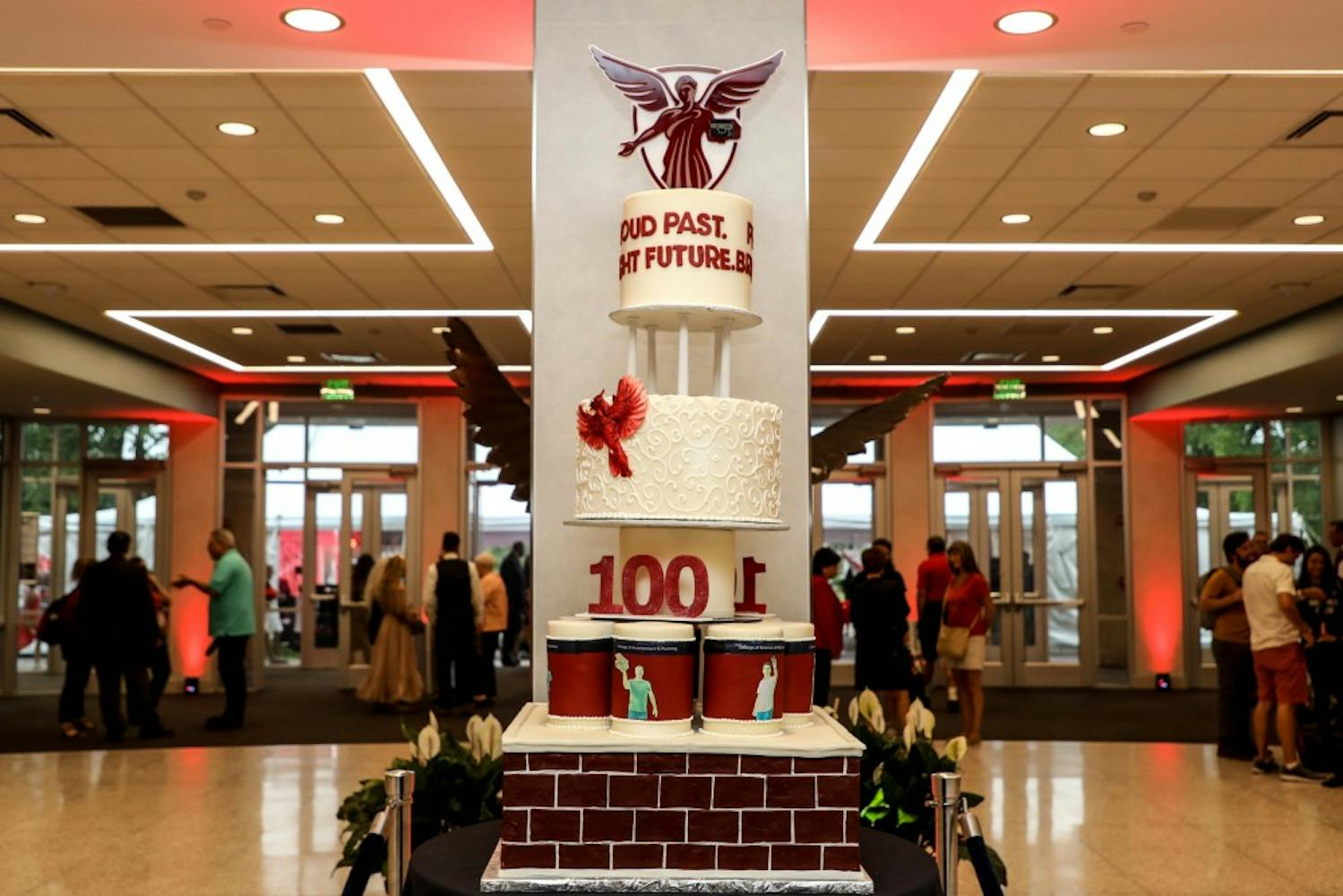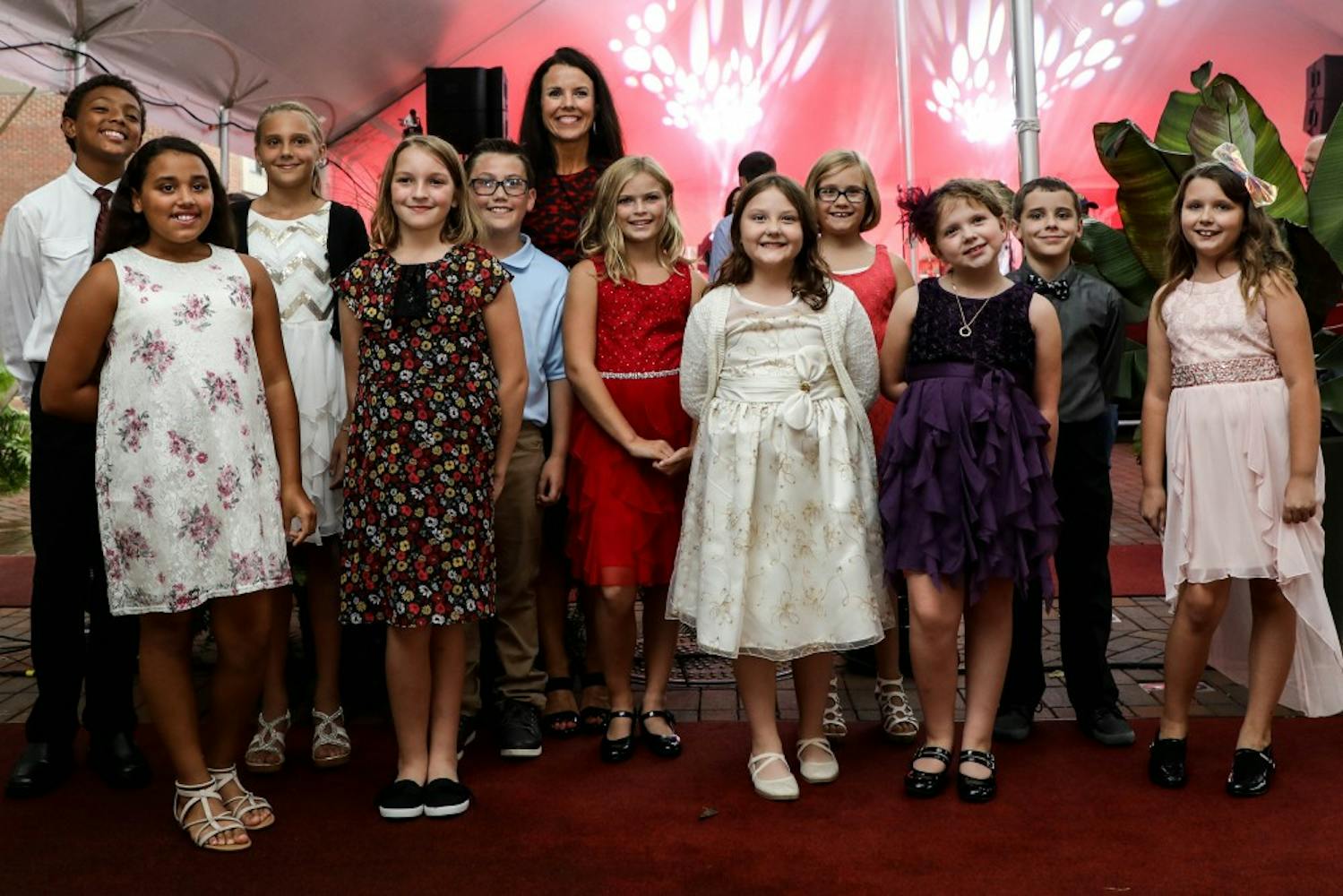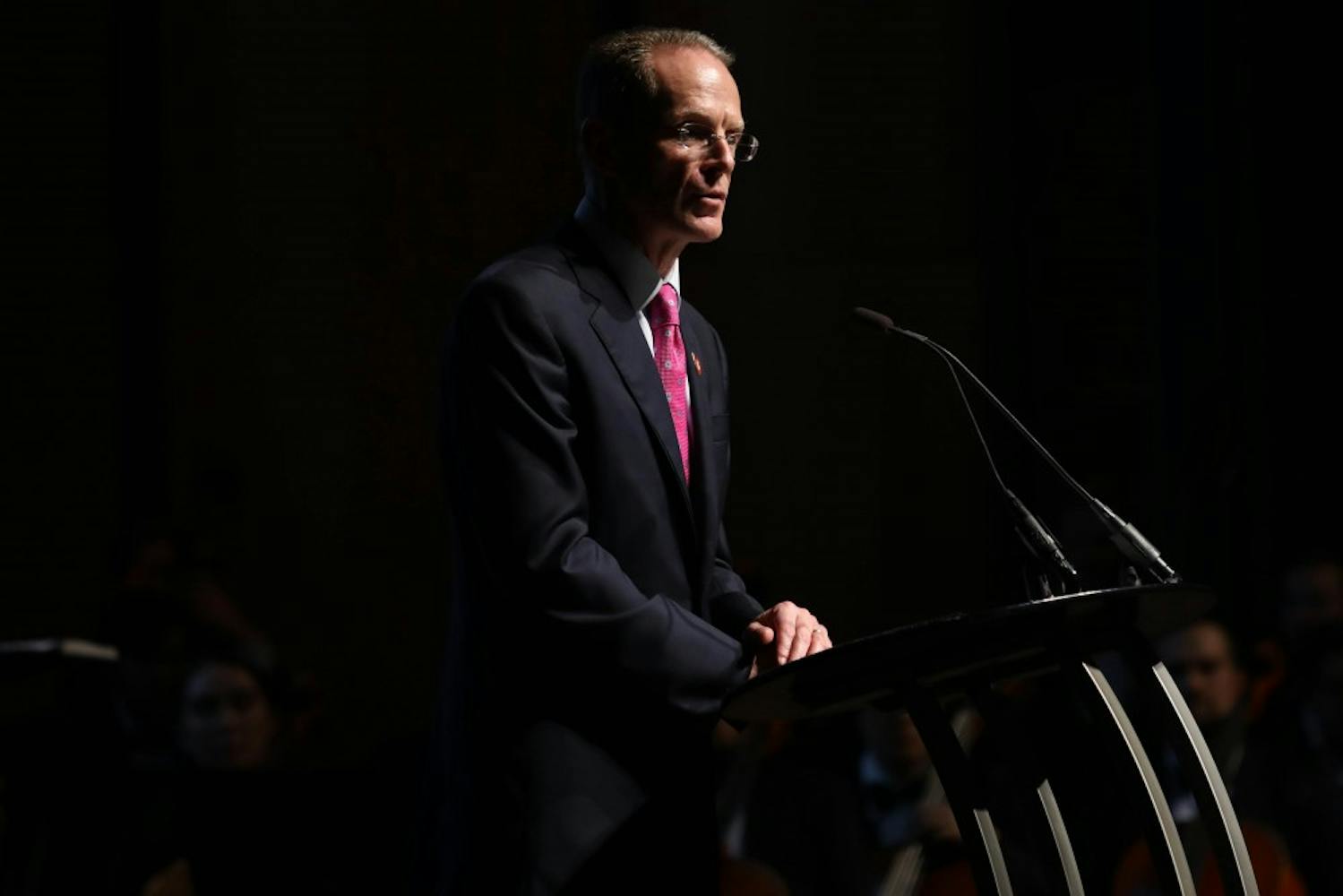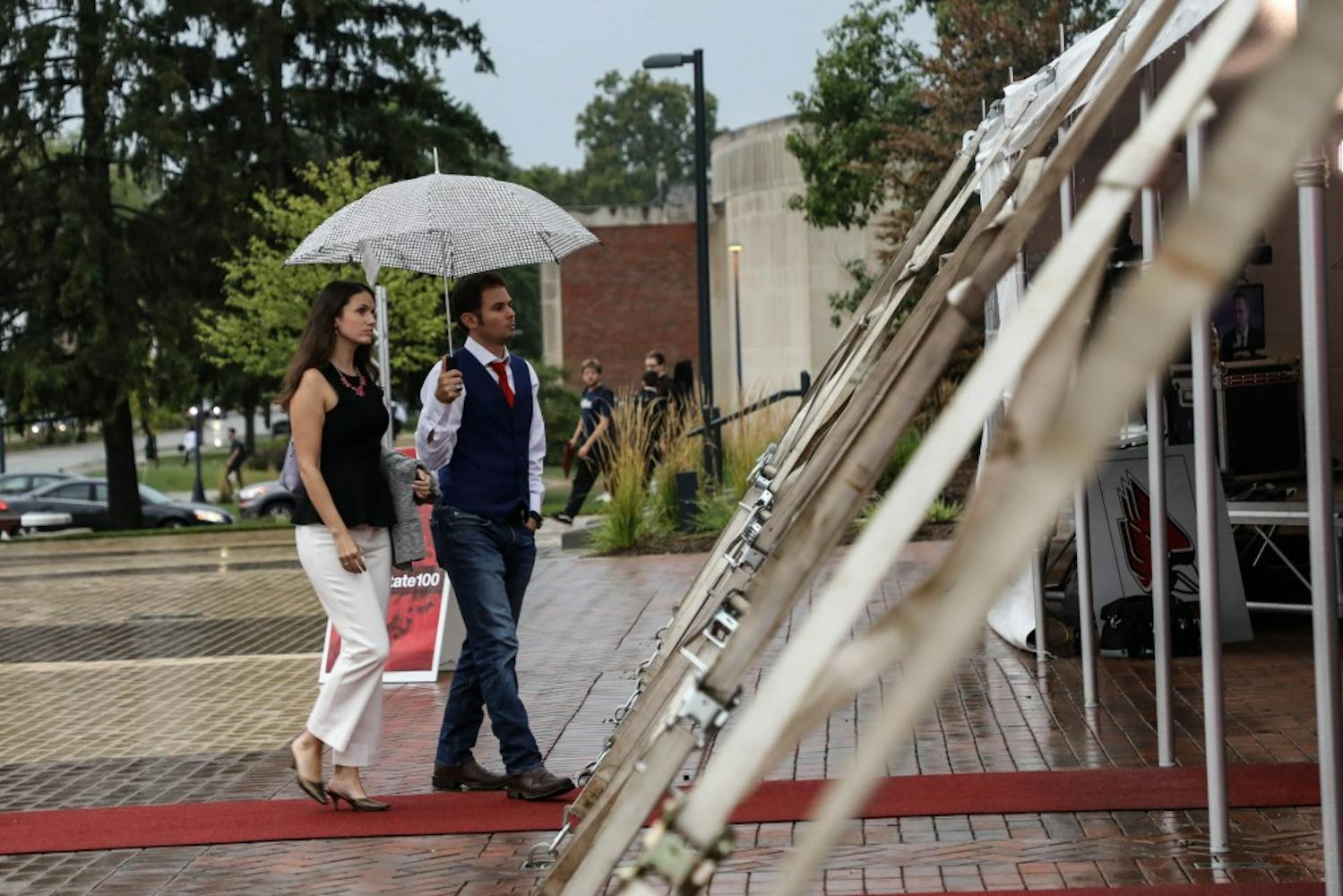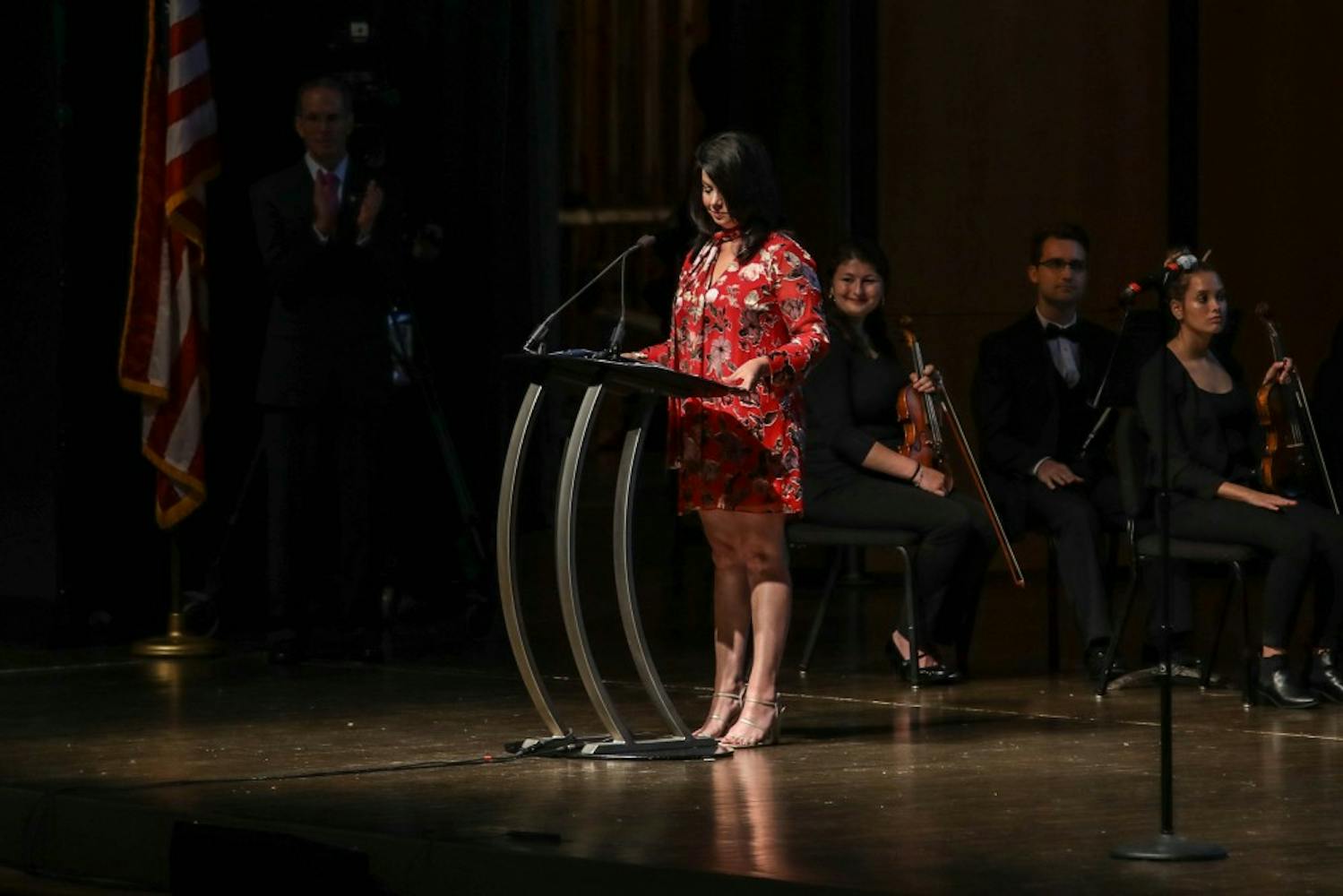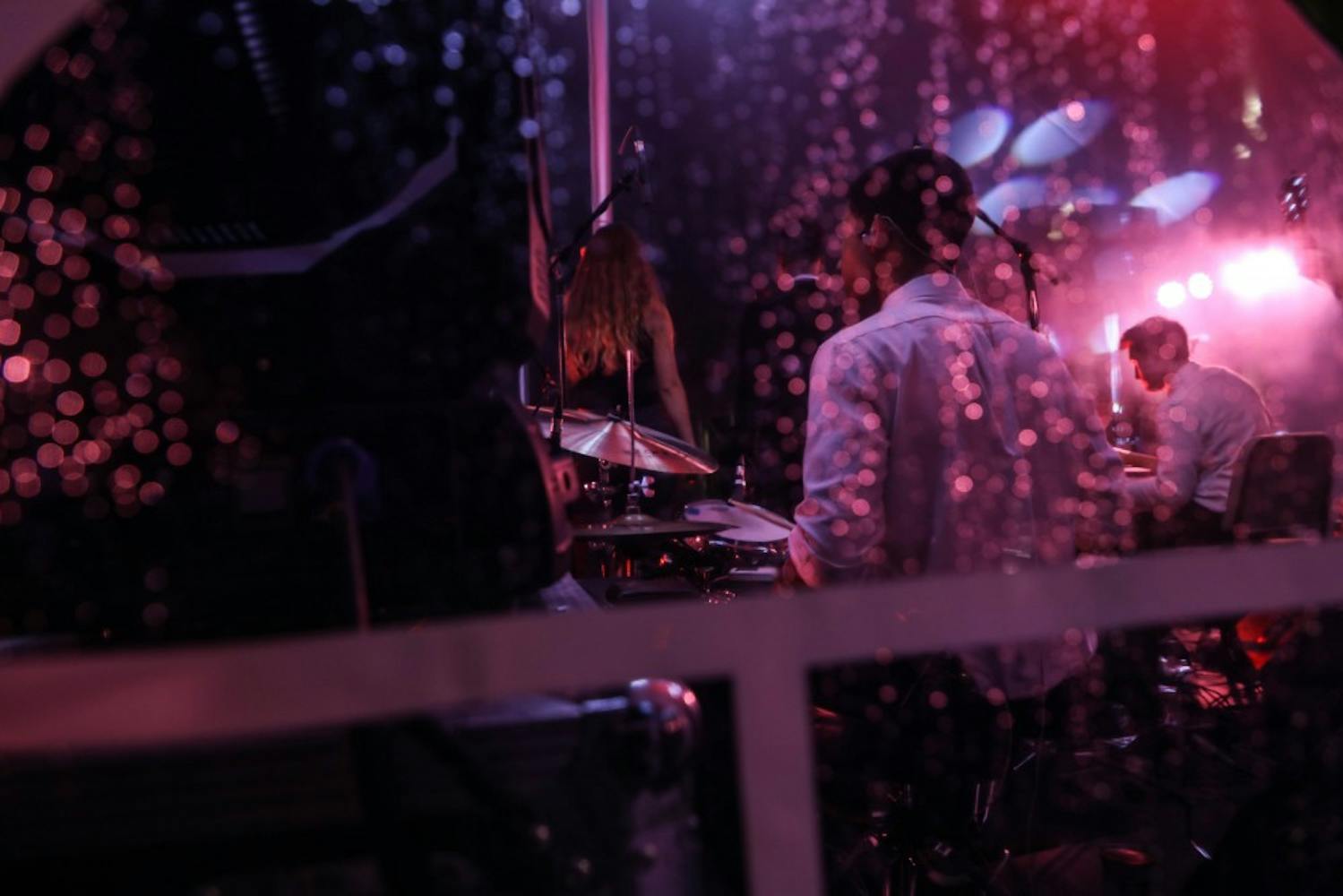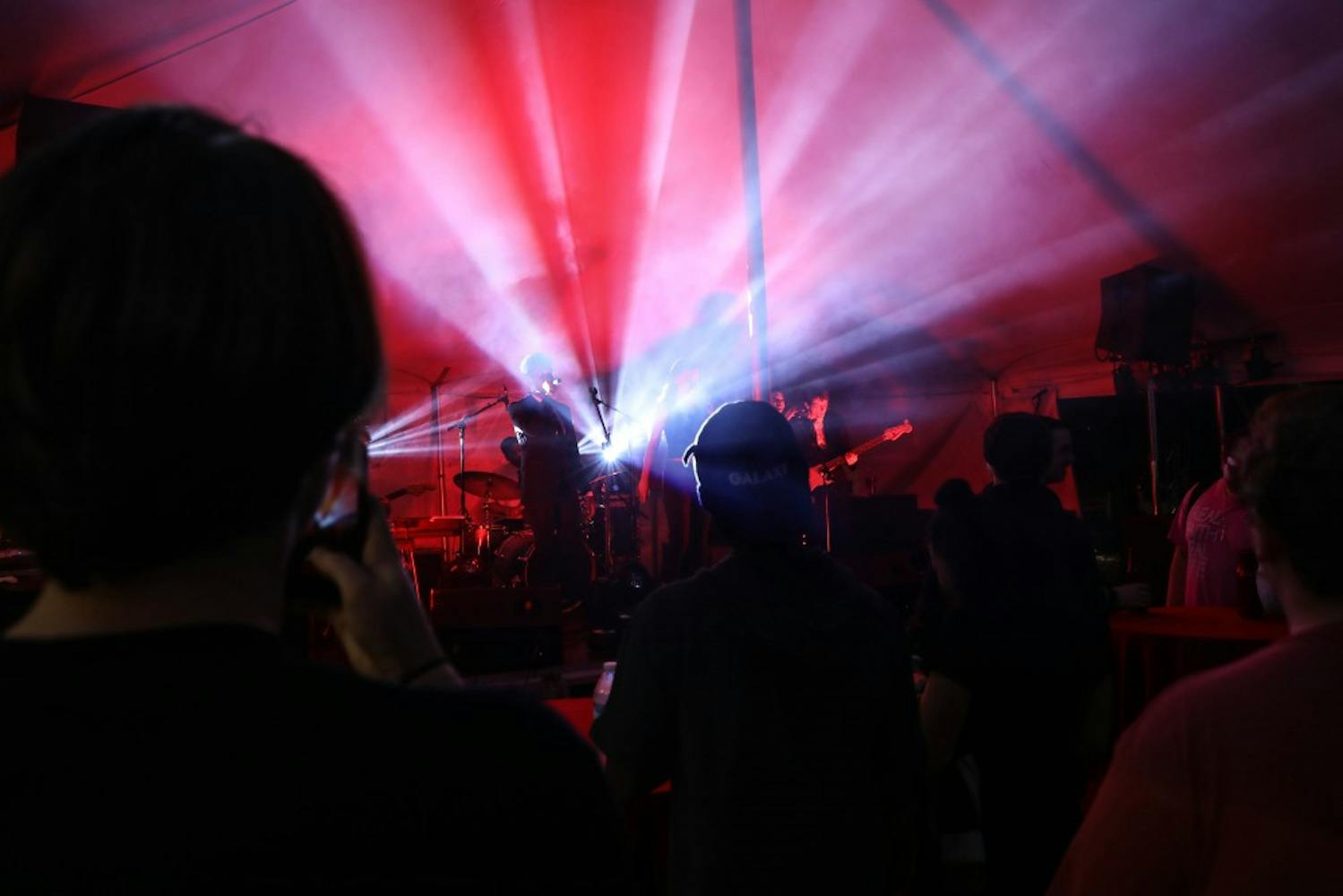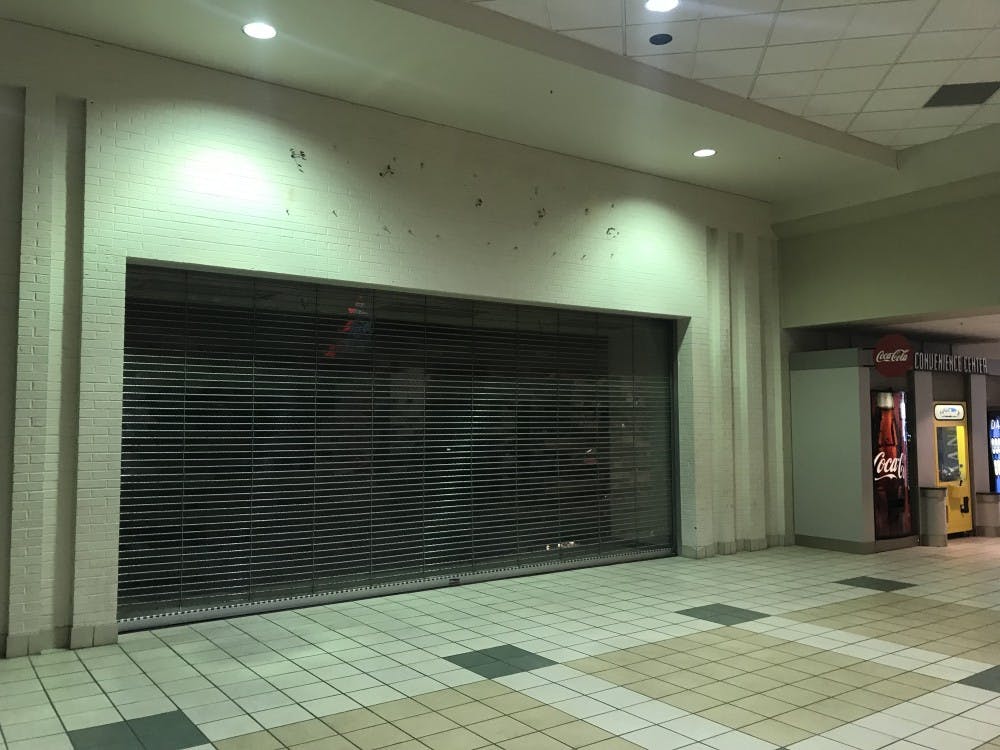Ball State’s history made it to the big screen Thursday night.
At the Centennial Celebration Kickoff, Ball State students, alumni, current and past administrators and presidents gathered to watch the story of how Ball State rose from its humble roots as a teachers college.
Big names came to Emens Auditorium despite the evening rain. Past presidents Jo Ann Gora and John Worthen were in attendance, as well as past Board of Trustees member Hollis Hughes and seven of nine current Trustees, according to President Geoffrey S. Mearns in his opening address.
RELATED: Ball State kicks off its centennial celebrations
RELATED: BSU Centennial documentary in the works
Janet Holcomb, Ball State alumna and wife of Gov. Eric Holcomb, presented the governor’s proclamation of Ball State’s Centennial Celebration, followed by her own remarks.
"I appreciate the University for its contributions to Muncie and central Indiana," the First Lady said. “Ball State anchors this community, and it cannot imagine Muncie without it.”
Afterward, acting and musical theater seniors and the West View Elementary School Choir performed “We Fly,” a piece the seniors wrote while the university was preparing to unveil its new brand.
Mearns said he saw the joint performance as a representation of the partnership between Ball State and Muncie Community Schools.
The piece, with lyrics about following the path of Beneficence and maintaining Ball State values, moved some audience members to tears.
After this, Mearns introduced what he said was the “student-produced” centennial documentary, “From Normal to Extraordinary: Ball State’s First Century.” In his introduction, he said students in the immersive learning class assigned with making the film were responsible for “every aspect” of it.
“Some universities would hire a company, a private company, to do this work,” Mearns said. “But at Ball State, we entrust these critical responsibilities to our students.”
However, the film was not produced without help from an outside company. Bayonet Media, made up of a group of Ball State alumni, was hired to assist with the documentary, assistant director Ryan Shank said.
Ben Thatcher, a student production sound mixer for the documentary, also said Bayonet Media helped with the documentary.
"[Bayonet Media] did all of the drone shots and some of the b-roll shots. They have gear and certification greater than that of the university and experience greater than that of a student," Thatcher said in an email. "This offered an opportunity for students to learn from working professionals and was very helpful."
Also notable is a previous immersive learning class that was charged with creating television commercials for Ball State back in 2016. Though the class produced content, it was never aired.
The nearly hour-long documentary reached far back into Ball State’s past, from when the Ball Brothers were considering moving glass manufacturing operations to Muncie.
While the film played on the projector screen, the Ball State Symphony Orchestra played on stage underneath the narration, with music styles matching the era being discussed.
Mixed in with more well-known Ball State history, like how it grew from a teachers college to the university it is today, was lesser-known facts and perspectives from those interviewed, including David Letterman, in the documentary.
The documentary largely celebrated the success Ball State has had over the years: new buildings, disciplines being added and a heightened sense of acceptance and resulting student diversity on campus.
Not everything was necessarily positive, though. In Hughes’ interview in the documentary, he recalls being discriminated against by Ball State on-campus housing because he is African-American.
When he went to Ball State, Hughes said that unless someone specifically requested an African-American roommate, the university (then called Ball State Teachers College) would not room white students with those of a different race.
However, Hughes also said he saw great change in Ball State at the time he studied there, including the transition from Ball State Teachers College to Ball State University.
Zoe Taylor, a Ball State alumna who was in the immersive learning class for the documentary and served as its director for promotional video, said this film will preserve the university’s reflection of the past 100 years for a long time.
“Video itself is so unique that it is still living and breathing,” Taylor said.
John Osterhoudt, the director of the film and a Ball State alumnus, said before the documentary’s premiere that the university and the team that made the documentary won’t realize its true impact for a while.
“The gravity of what we’ve done probably is yet to reach its significance,” Osterhoudt said.
Afterward, the Ball State Studio Band performed live music in a tent outside the auditorium doors and people ate food from vendor trucks and stands lined along Riverside Avenue.
When the rain let up, fireworks launched from the quad, with people watching from the Scramble Light, the brick terrace of Emens and on the auditorium’s balcony.
The next centennial event is a Road Show to South Bend set for Sept. 7.
Contact Sara Barker with comments at slbarker3@bsu.edu or on Twitter at @sarabarker326.

